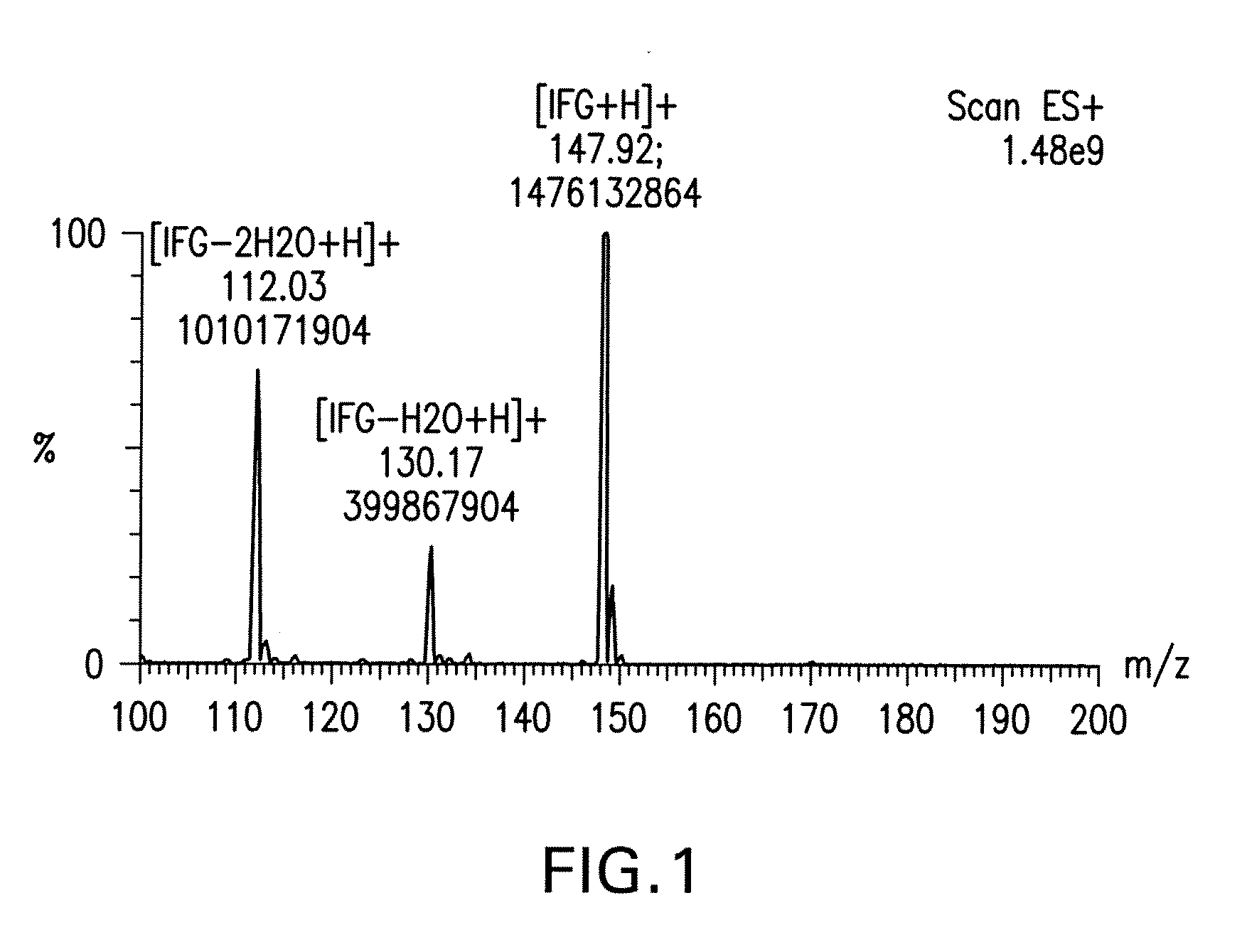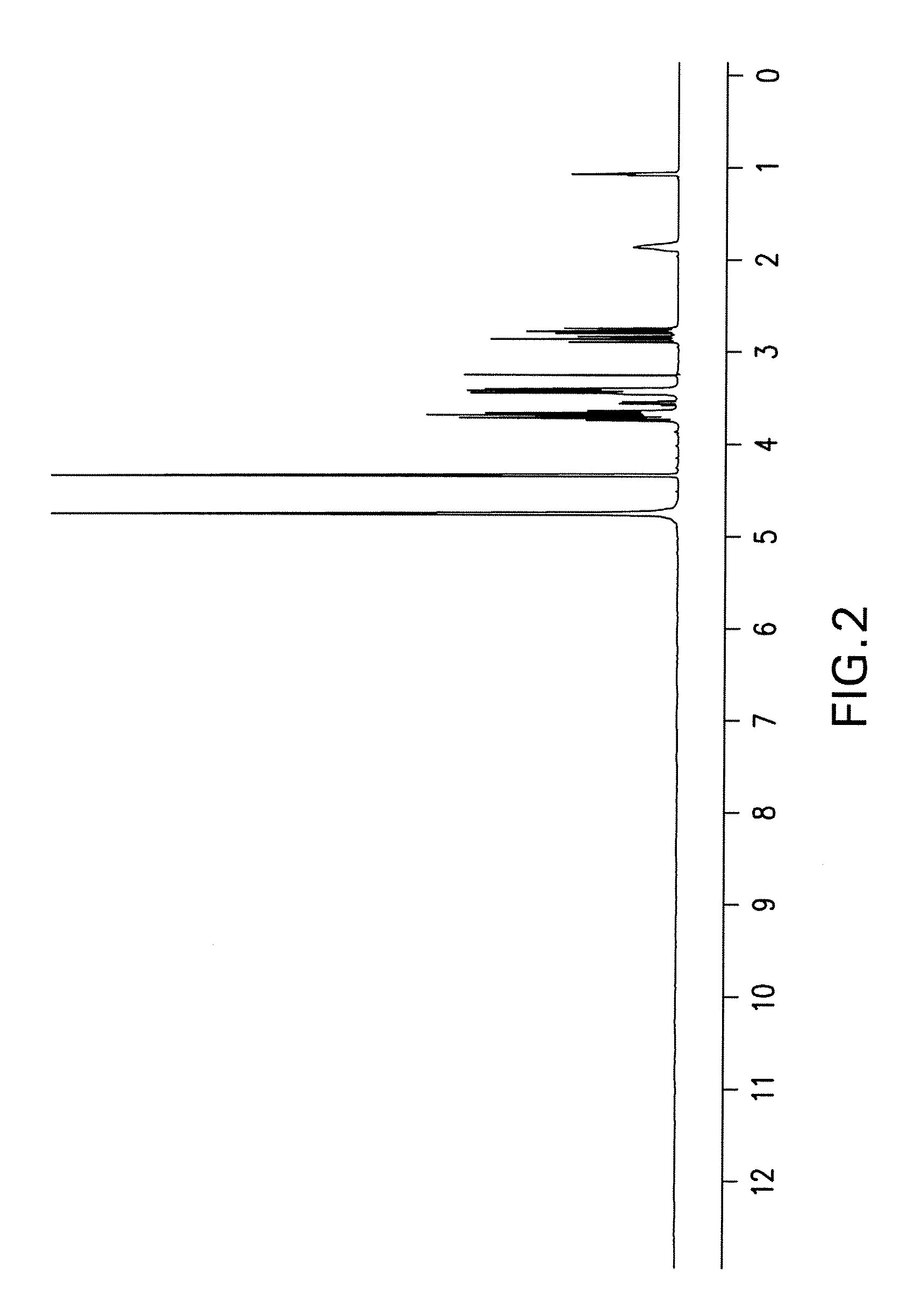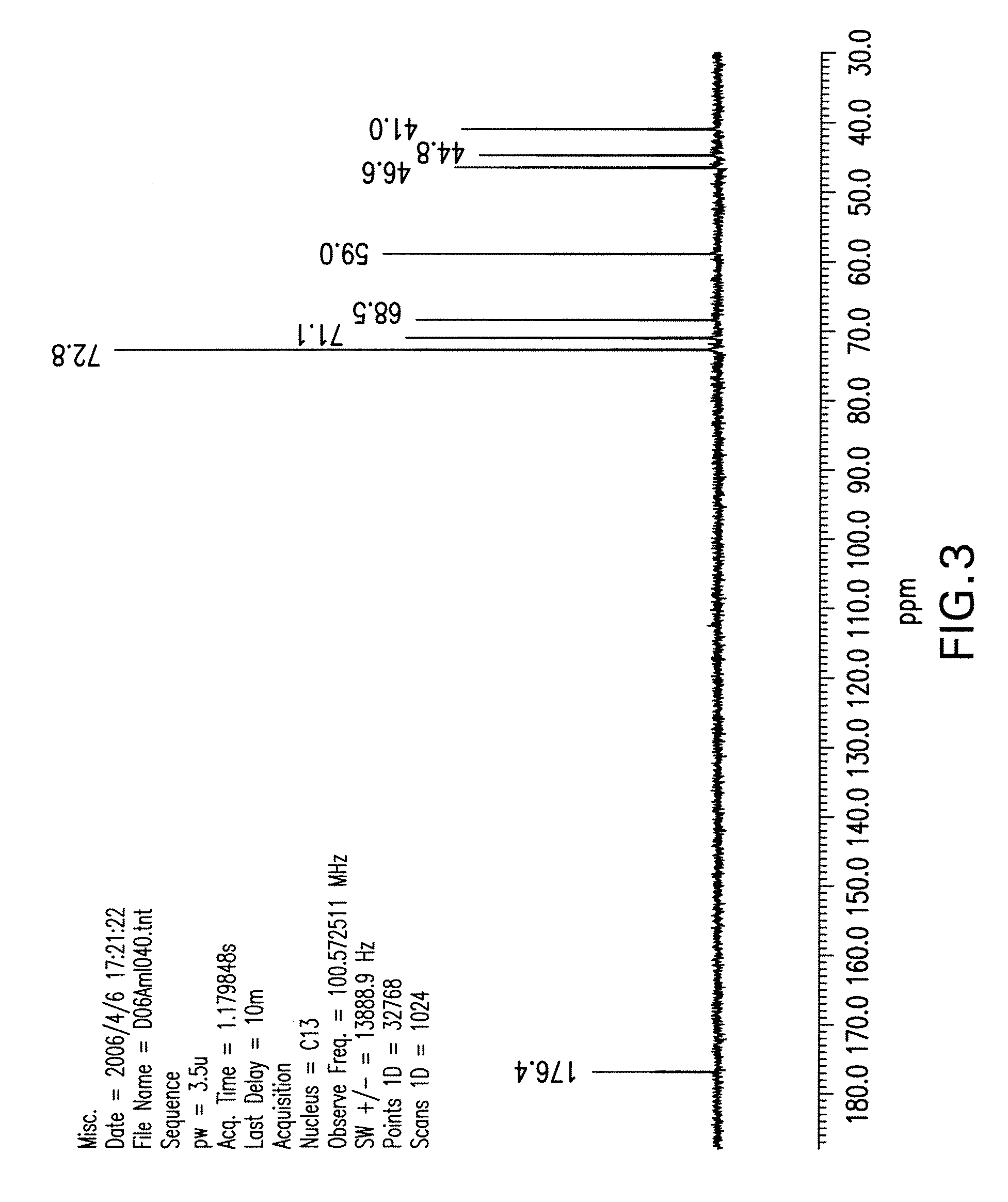Tartrate Salt of Isofagomine and Methods of Use
a technology of isofagomine and salt, which is applied in the field of lysosomal storage disorder, can solve the problems of shortened life span, difficult use of isofagomine in pharmaceutical products, and inability to purify isofagomine-hcl as well as isofagomine free base on a large scal
- Summary
- Abstract
- Description
- Claims
- Application Information
AI Technical Summary
Benefits of technology
Problems solved by technology
Method used
Image
Examples
example 1
Synthesis of IFG Tartrate From D-(−)-Arabinose
[0100] Reactions were monitored by TLC and visualized with 5% H2SO4 / methanol, with phosphomolybdic acid solution, or with UV light at 254 nm.
[0101] Step 1: D-Arabinose (50 kg, 330.04 moles) and benzyl alcohol (132.2 kg, 4.33 equivalents) were stirred and heated to 35° C. Acetyl chloride (10.9 kg, 0.42 equivalents), keeping the temperature 1H NMR (300 MHz, DMSO-d6): δ 7.32 (m, 5H), 4.76 (s, 1H), 4.66 (d, J=12 Hz, 1H), 4.59 (m, 3H), 4.45 (d, J =12 Hz, 1H), 3.70 (m, 4H), 3.47(dd, J=12, 3 Hz, 1H).
[0102] Step 2: 2-Benzyl-D-arabinose (73.5 kg, 305.92 moles) was mixed with acetone (522 kg). 2,2-Dimethoxypropane (26.6 kg, 1.9 equivalents) was added in one portion followed by p-toluenesulfonic acid monohydrate (39.3 g, 0.0007 equivalents). The mixture was stirred at 40° C. for 18 hours. After the reaction was complete, triethylamine (193 mL, 0.0046 equivalents) was added. The solvents were removed at 30° C. under reduced pressure until a thick...
example 2
Recrystallization of Isofagomine Tartrate
[0111] Isofagomine tartrate (1,767 g) was dissolved in water (1.767 L) at ambient temperature. Absolute EtOH (1.767 L) was added and stirred for over 30 minutes. An additional aliquot of absolute EtOH (1.767 L) was added dropwise at a slow stream and stirred for 30 minutes. This process was repeated twice (including the 30-minute of stirring) to obtain a solution of 4:1 EtOH / water. The solids were filtered and washed with EtOH / water (4:1) and dried in a vacuum oven at 43° C. overnight to a constant weight (i.e., <1% net weight loss after re-drying for an additional 2 hours). The yield from recrystallization was 91%. The sample was found to have 1.3% impurities based on HPLC. NMR spectra of the recrystallized product are shown in FIG. 3 and FIG. 4. m.p. 168-169° C.
example 3
Synthesis of Isofagomine Tartrate Salts
Isofagomine L(+)-Tartrate salt (2:1)
[0112] A solution of L-(+)-tartaric acid (102 mg, 0.679 mmol) in deionized water (1.0 mL) was added into the solution of isofagomine (200 mg, 2.0 equivalents) dissolved in deionized water (2.0 mL) at room temperature. The solution was stirred for 10 min and lyophilized overnight. The residue was further dried under vacuum at 45° C. for three days to afford the desired salt (275.6 mg, 91%). m.p. 92-93° C., 1H NMR (300 MHz, D2O): δ 4.22 (s, 2H), 3.71 (dd, J=12, 3.6 Hz, 1H), 3.67-3.59 (m, 2H), 3.44-3.37 (m, 3H), 2.85 (t, J=12 Hz, 1H), 2.75 (t, J=12 Hz, 1 H), 1.85 (m, 1H) (FIG. 8A)
Isofagomine D-(−)-Tartrate Salt (2:1)
[0113] A solution of D-(-)-tartaric acid (102 mg, 0.679 mmol) in deionized water (1.0 mL) was added into the solution of isofagomine (200 mg, 2.0 equivalents) dissolved in deionized water (2.0 mL) at room temperature. The solution was stirred for 10 min and lyophilized overnight. The residue wa...
PUM
| Property | Measurement | Unit |
|---|---|---|
| particle size | aaaaa | aaaaa |
| density | aaaaa | aaaaa |
| RH | aaaaa | aaaaa |
Abstract
Description
Claims
Application Information
 Login to View More
Login to View More - R&D
- Intellectual Property
- Life Sciences
- Materials
- Tech Scout
- Unparalleled Data Quality
- Higher Quality Content
- 60% Fewer Hallucinations
Browse by: Latest US Patents, China's latest patents, Technical Efficacy Thesaurus, Application Domain, Technology Topic, Popular Technical Reports.
© 2025 PatSnap. All rights reserved.Legal|Privacy policy|Modern Slavery Act Transparency Statement|Sitemap|About US| Contact US: help@patsnap.com



